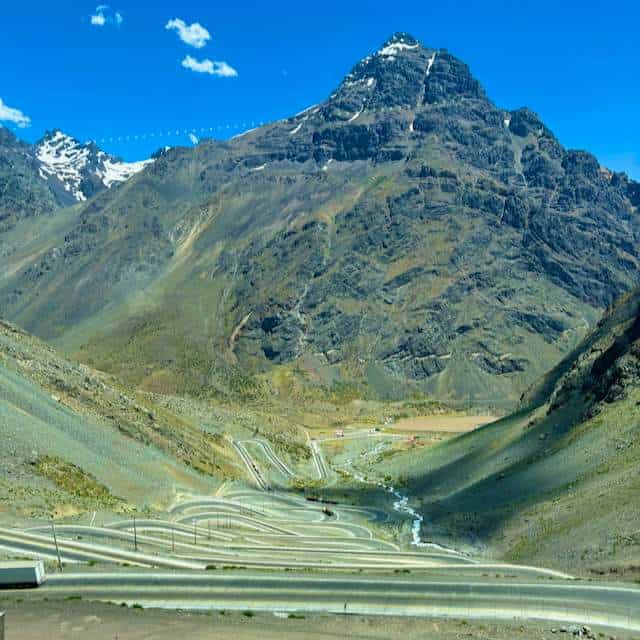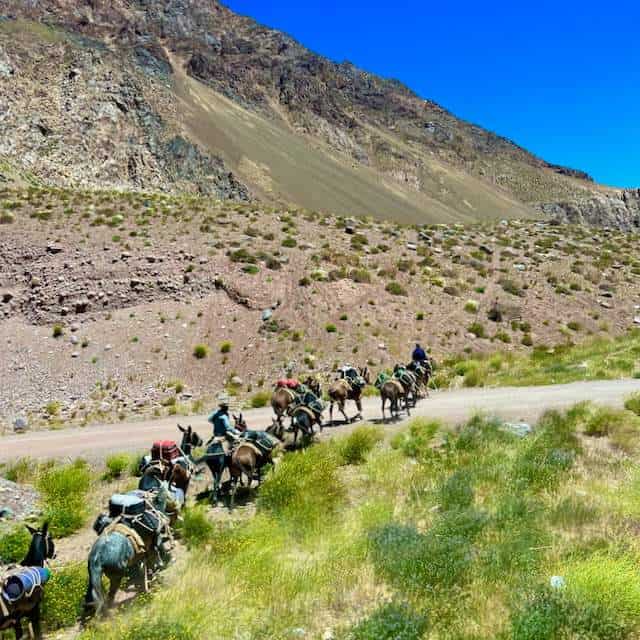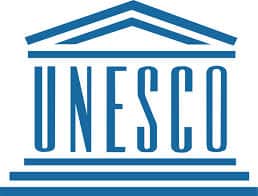
The Inca Empire and its impressive infrastructure
Have you ever travelled between Argentina and Chile, across the Andes? Then you will likely have travelled on the present-day version of the Qhapaq Ñan, an extraordinary 30,000-km ancient Inca road network.
In its heyday, the Inca Empire (1438–1533 CE) spanned a vast stretch along the western coast of South America, from the northern highlands of Ecuador to the southern deserts of Chile. As you can imagine, this geographical expanse came with massive logistical challenges.
We need infrastructure, they decided. After all, this empire is El Ombligo del Mundo, the navel of the world. We must build roads. And a masterpiece of engineering it was, connecting all the parts of their huge empire, across present-day Peru, Ecuador, Bolivia, Chile, Argentina, and Colombia. The Incas could now manage their far-flung territories, conduct diplomacy and move armies.

The Qhapaq Ñan was more than just infrastructure, though. It was a conduit for culture, for facilitating communication and trade, and not least, to consolidate imperial power. In short, this road network was the backbone that unified the Inca empire.
The roads connected religious shrines and ceremonial centres, as well. Pilgrims moved along the Qhapaq Ñan to reach their spiritual hubs, such as the sacred Machu Picchu, the famous sun temple of Coricancha, and of course Cusco, the Inca capital and centre of the universe. All power was centralised in Cusco. Everything radiated out from here like the spokes of a wheel. The nave of the navel. Cusco was connected to everywhere. Everywhere was connected to Cusco.
Mendoza and the Qhapaq Ñan

It is a warm January morning, when we begin our journey in Mendoza in Argentina’s Cuyo Region, in the foothills of the Andes. It is a modern city, charming and friendly, surrounded by stunning landscapes. Climbing and hiking opportunities abound.
So do great food and wine. This is prime high-altitude wine-growing country, and Mendoza is home to the famous, fruity, full-bodied Malbec wines.
This area has been a significant crossing point between Argentina and Chile for centuries – and still is. The Mendoza valley was a key location here at the southern parts of the Qhapaq Ñan, connecting the Incan heartland to points further south, controlling the flow of information and of goods such as potatoes, maize, textiles, pottery, precious metals… everything went through Mendoza.

And you can still find remnants of the Qhapaq Ñan here: scenic trails along ancient roads, bridges and remains of tambos.
In Inca times, a tambo (tampu in Quechua) was a waystation, an inn, a place to rest and restock supplies. The tambo offered food, shelter, and provisions for travellers, traders, and army personnel, not unlike the caravanserai in the Middle East.
The Qhapaq Ñan: Mendoza to Chile
The Qhapaq Ñan crosses one of the most extreme geographical landscapes in the world, going from high-altitude mountains to the coast, across arid deserts, fertile valleys, and rainforests. There are mountain paths, desert tracks, coastal roads, terraces, tunnels and natural fibre suspension bridges spanning deep ravines.
The Incas overcame natural obstacles and adapted the landscape to their needs, much like we do today. Only they did it without modern machinery. They also integrated the roads into the landscape with minimal environmental impact. So we have a road system which is functional and is in a harmonious relationship with nature. They seem to have had a natural knack for balancing progress with preservation, the Incas did. And in a world that increasingly values sustainability, the Incas can certainly teach us a lesson: how to create systems that benefit progress whilst respecting the environment.
Sadly, the Inca Empire fell to the Spanish conquistadores in the 16th century. But the locals got their comeuppance a few centuries later.
We are about to cross the Paso de los Andes, a stretch especially important for trade and cultural exchange – and military battles. In the early 1800s, when all of South America fought for independence, many armies traversed the Qhapaq Ñan. Famous freedom fighter and South American hero, José de San Martín, who liberated Argentina, Chile and Peru from Spanish occupation, crossed just this path from Mendoza to free Chile.
As we continue towards the border, we are on modern roads that have replaced the ancient infrastructure. Still… it is an interesting mental game, imagining that the centuries have merged. I see San Martín and his Army of the Andes marching past here. Over there, Inca merchants are carrying sacks of potatoes on the back of llamas. Further down the road is a chasqui, a runner carrying messages and sacred objects between the distant shrines. Further still, a tambo, offering lunch and rest.
The Qhapaq Ñan continues to be an important part of Andean life. And it is not just a memento of the past. A good part is still in use; modern-day Andeans rely on the ancient pathways for transportation. And what’s more, the Qhapaq Ñan also plays an economic role. As tourism to ancient Inca sites like Machu Picchu grows, stretches of the Qhapaq Ñan are preserved and restored, so we have the opportunity to experience this brilliant construction firsthand.
Mendoza to Chile today
The road from Mendoza to Valparaíso is scenic and adventurous.

From Mendoza, we travel by bus along Ruta Nacional 7 towards Paso Internacional Los Libertadores (the Liberator’s Pass, also known as Paso Internacional Cristo Redentor) at the top of the Andes. This is the main border crossing between Argentina and Chile, open year-round but sometimes closed during winter (Jun–Sep). Snow and ice can make the pass treacherous.
On the way to the border, the road passes through vineyards and olive groves. We get a glimpse of the Malbec region.

Then, heading up towards the pass, we go through dramatic mountain scenery: winding roads, small villages with names like Punte de Vacas (Cow’s point) and Puente del Inca (Bridge of the Inca). Nearby is Hotel Puente del Inca, a former spa hotel, damaged by a landslide some 60 years ago. The spooky ruins are still standing, and it would have been interesting to explore. There is just something eerily exciting about abandoned hotels.

I would also have liked to have a closer look at the village’s namesake. Puente del Inca is a natural arch, forming a bridge over Rio Las Cuevas. Next time I am going this way, I will have my own wheels. And more time.
Nearing the border, we spot the snow-capped peak of mythical Aconcagua. At 6,961 metres, it is the highest mountain in the Americas. To the Incas, Aconcagua was a sacred mountain. Mummified body parts and various artefacts have been found near the top, indicating that they used the mountain for human sacrifice and spiritual ceremonies.

At the border station, we go through immigration and customs for both Argentina and Chile. It is a quick in and out for our bus, with just enough time for the loo and getting some water, all quite straightforward. But others have spent several hours waiting here, so you never know.
Onwards: Chile
In Chile, we continue on La Ruta 60-CH. And this is where the adventure comes in. Descending winding mountain roads, some of them very steep. And I am Norwegian, so I know steep mountain roads. But it is different when you’re not behind the wheel, isn’t it… My life is in the hands of the bus driver.

View from the top floor of a bus! Focus on the views instead.
Luckily, he seems to know what he’s doing.
Continuing westwards, we pass through the valleys of central Chile, also pretty: fertile farmland, vineyards, scenic hills. As we approach the Pacific, the road begins to wind down toward Valparaíso, with spectacular views of the ocean and the colourful city.
Practicals

- The journey lasts 6-7 hours or more, depending on weather conditions and border crossing times.
- Weather: Even in summer, the weather can change dramatically as you cross the Andes. We are here in January, in the middle of the southern summer. Layers of clothes come in handy.
- Altitude: Paso Internacional Los Libertadores is at 3,200-metre altitude. This can affect both you and your vehicle.
- Vehicle requirements: Make sure your car is in good condition. If you are travelling in winter, carry snow chains and, importantly, know how to use them.
- Border crossing: Bring your passport and any necessary documents for you and your vehicle. Both Argentina and Chile have strict customs regulations regarding the import of food, plants, etc. Make sure you check the current guidelines ahead of time.
All photos by Ingunn Elvekrok and yours truly.

Qhapaq Ñan, Andean Road System is a UNESCO World Heritage site.
Here are more UNESCO World Heritage sites around the world.
Please visit:
Our Sponsor


